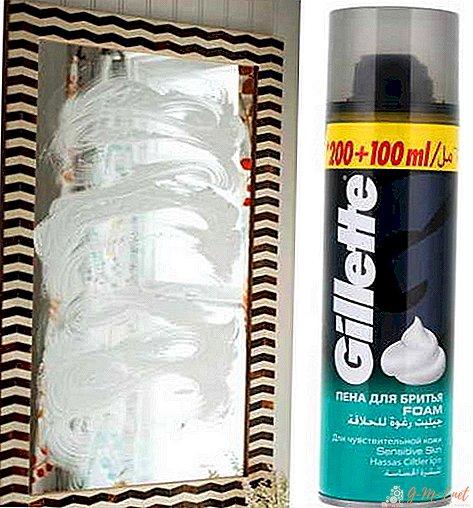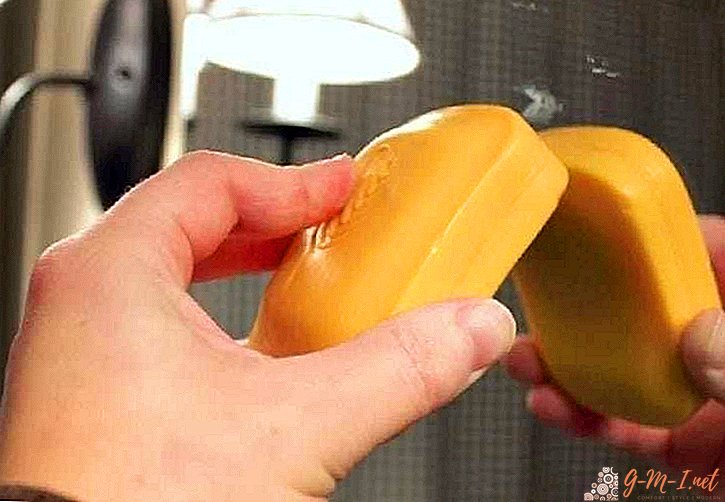Each person was faced with the fact that after taking a bath or shower, the mirror fogged up. The reason for this is heating and increasing air humidity during water procedures. When air enters a cold surface, condensation forms. As a result, it becomes impossible to see the reflection.
In this case, you have to wait until the condensate evaporates. Of course, you can wipe the surface with a dry cloth or blow dry. However, there are various special tools and folk methods that prevent fogging.
Shaving cream and foam are excellent anti-fog agents. Suitable tool of any manufacturer. You will also need a dry cloth or microfiber:
- Previously, the mirror should be thoroughly washed, and the bathroom should be ventilated.
- Foam or cream should be applied evenly over the entire treated area.
- Using a lint-free cloth or microfiber, wipe the mirror surface dry.

Attention! No need to take too much shaving. Otherwise, stains form that are difficult to remove.
A microscopic layer of cream or foam forms on the mirror, which will prevent further misting. Usually one procedure is enough for several weeks, but if necessary, you can process the product with foam every week.
You can prevent fogging using industrial means or using folk methods:
- Ventilation. The ventilation grill in the bathroom must be periodically cleaned of accumulated dust. This is necessary to ensure constant air circulation in the room.
- Shampoo. Previously, the mirror must be thoroughly washed and wiped dry. On a dry lint-free cloth, apply a few drops of any shampoo. The product must be evenly applied to the entire surface, and then wiped with a clean, dry cloth. It should be wiped until soap stains have completely disappeared. The result is usually enough for 2-3 weeks.
- Glycerol. The tool copes with fogging glasses and mirrors. It is part of cosmetic soap. Moreover, the substance is completely safe, odorless and does not cause allergies. You can buy it at any pharmacy. Glycerin can be added to the water during cleaning, and can be applied to the product.
- Gelatin. One teaspoon of dry gelatin should be dissolved in 50 ml of water. The resulting composition must be applied to the surface. The solution creates a thin transparent film that protects against the accumulation of water droplets.
- Vinegar. Water and vinegar must be mixed in a proportion of one to one. For ease of application, the resulting solution can be poured into a spray bottle. The composition must be used when cleaning the room. After application, the treated surface should be wiped with a dry, lint-free cloth. For greater effectiveness, a little washing liquid can be added to the solution.
- Toothpaste. The paste must be applied to a cotton pad, wipe the surface and rinse thoroughly. It will not only prevent fogging, but also remove various impurities.
- Soap. One of the simplest and most common anti-fogging options. The dry product should be rubbed with any soap, and then remove the formed traces with microfiber.

All of these tools can easily cope with the problem of fogging mirrors. At the same time, they will remove the formed spots and return the product to its original shine. Whichever one is used, the main thing is to regularly repeat the procedure.



Leave Your Comment